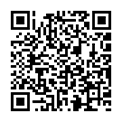 |
編目園地推出LINE服務囉! 歡迎掃描QR Code立即加入編目園地的LINE@帳號, 每月編目園地的更新內容、國內外資訊組織報導等訊息將一次提供給您! |
-
技術規範訊息
-
北美RDA委員會論壇於 2021年 3月29日發布有關3R後時代的RDA資訊
-
北美RDA委員會 2021年的線上虛擬論壇於3月29日舉行。報告人包含了北美RDA委員會和RDA指導委員會的成員。本次會議主要討論 RDA 完成 3R 專案後的下一個階段任務,以及 RDA 在美國及加拿大圖書館的使用情形。包括:
- Thomas Brenndorfer: RDA 和 資源標籤下新設的社群資源段落。 原先在 AARC2 及 第一版 RCA 的附錄裡,著錄規定都以英美文化環境為主。新版從主要 RDA部份抽離,讓各個不同的語境可以有不同的處理規定。依造不同的語言別列出,正在建構中。
- Melanie Polutta: LC/PCC 編目政策因應RDA的修正計畫進度
- Thi Bao Tran Phan: 加拿大國家圖書館暨檔案館近況報告
- Robert Maxwell: RDA 的運作方式. 簡述 RDA 背後的幾個核心成員及整體的合作方式。
- Kathy Glennan: RSC 在 2021 年的工作方式。詳細說明對 RDA 提出建議或修正的三種方式。
- James Hennelly: RDA Toolkit 現況及未來發展
- Stephen Hearn: RDA 如何成為機器可以識別的資訊。
-
RDA 指導委員會主席Kathy Glennan 以「The New RDA Toolkit: How Did We Get Here, and What Do We Do Next? 」為題發表演說
-
RDA 指導委員會主席 Kathy Glennan 三月一日在美國音樂圖書館協會和戲場圖書館協會的聯合會議上,針對 RDA 的發展做了一個線上的演講,簡報公布在 RSC 的網站上。
基於這兩種類型的書館裡的主要資源類型,正好是RDA面臨的最大挑戰的一部分;採用RDA的比例也相對比一般圖書館低,因此演講者對RDA的前世今生,做了一個很簡單精僻的說明。同時對新版的 RDA Toolkit 內容編排,也做了蠻詳盡卻簡要的介紹。對於想要入門了解 RDA 的人,是個很好的參考資料。簡報內容要點:
- AACR II
- 從做為編目手冊開始,因應當時沒有太大變化的印刷出版環境而設計,而書目資料的展現則是以卡片的型式為主。
- 2002年後的新版意識到電子資源的出現,也對連續性出版品有了新的定義。但是在1997年起,圖書館界已經感覺到必須全面修改的必要。
- 初版的RDA
- 為了同時處理傳統書籍資源及因應網路產生的新資源而設計。(無形的載體如線上資源, 或者複合式的型態如連續性出版的地圖以光碟方式發行等)。比較依賴館員的判斷。像是給館員的指引和解釋。
- 2010 出版,2013後陸續被圖書館採用。 以 IFLA FRBR 模型為基礎。以網路資源的方式發行,也有印刷版本。逐年更新。
- 主要使用在 MARC21 環境裡的線上目錄。
- 爭議性在於未完全採用 ISBD; 有人批評過於遷就傳統, 也有人覺得不須無端放棄行之有年的編目實務。
- 3R Project, RDA Toolkit Restructure and Redesign Project
- 2016年啟動, 主要從 IFLA 的 FRBR 模型過渡到 IFLA LRM 模型。初版內容在2017年後凍結,不再更動。
- 提供更有彈性的方式來描述資料。開發能彼此建立關係的方式,讓RDA更適合鏈結資料的應用。
- 致力推動RDA的國際化。改良 Toolkit 使用介面及長久以來累積的問題。改善資料架構,提供更有效率的工作流程和工具。
- 新版 RDA
- 面對逐漸改變的出版環境,更符合資源使用者的期待而設計。希望能獲得博物館及檔案館相關機構的採用。可使用於任何運用 RDF 鏈結資料的應用環境。
- 有爭議的幾個部分: 單元集 element 大量擴充卻沒有提供任何的層級架構或先後次序;為了適用於國際化的環境,使用指引僅提供原則性的敘述,有賴不同社群的使用單位提出更多可資參考的文件說明;很多針對英美語境提出的說明文字,終須移入不同的社群資源頁籤比較合適;單元集的名稱定義,甚至說明文字都沒有使用編目館員習用的詞語來書寫;根據 RDA 建立的資料是否可以跨社群來交換。
- RDA 勢必面對一個持續演化的新環境。預期未來每季的更新中,還是會有不少的改變。要真正能從鏈結資料的環境得到好處,必須掙脫圖書館與外界隔絕的心態,諸如檢索上過分依賴字詞的相符而非實質意義上的吻合;執著於書目紀錄的概念;對於認為不合適的資訊逕自刪除而不是建議棄用的態度等等。
- AACR II
-
-
編目園地快報
-
更新國家圖書館學位論文相關代碼表
-
更新 國家圖書館學位論文學校及系所(新增3校;修改2校)
新增 國家圖書館學位論文系所名稱或代碼新增、修訂一覽表(110年04月)
-
-
資訊組織文獻
-
Resource Description and Organization in Academic Libraries in Ghana: Evidence from the Practice of Three Top Universities
-
The study is of the cataloging and classification practice as it pertains to the Ghanaian perspective with the goal of contributing to research in this area. The case study design was used with data primarily elicited from a sample of 39 cataloging department staff. The study reveals the online nature of resource description practice as well as its universal acceptance and centrality in the value chain of academic library operations. The study identifies the financial investment in the practice as low and recommends an increase in financial allocation and in collaboration and networking among catalogers in the country.
-
Cataloging Principles and Objectives: History and Development
-
Cataloging principles and objectives guide the formation of cataloging rules governing the organization of information within the library catalog, as well as the function of the catalog itself. Changes in technologies wrought by the internet and the web have been the driving forces behind shifting cataloging practice and reconfigurations of cataloging rules. Modern cataloging principles and objectives started in 1841 with the creation of Panizzi’s 91 Rules for the British Museum and gained momentum with Charles Cutter’s Rules for Descriptive Cataloging (1904). The first Statement of International Cataloguing Principles (ICP) was adopted in 1961, holding their place through such codifications as AACR and AACR2 in the 1970s and 1980s. Revisions accelerated starting in 2003 with the three original FR models. The Library Reference Model (LRM) in 2017 acted as a catalyst for the evolution of principles and objectives culminating in the creation of Resource Description and Access (RDA) in 2013.
-
Cataloging and Classification: Back to Basics
-
Participants of the ALISE session agreed that in order to prepare library and information science (LIS) students to be successful cataloging practitioners in this changing landscape, they need a solid understanding of fundamental cataloging concepts, standards, and practices: their history, where they stand currently, and possibilities for the future. The articles in “Cataloging and Classification: Back to Basics” are meant to complement textbooks and lectures so students can go deeper in specific topics. New and well-seasoned library practitioners will also benefit from reading these articles as a way to refresh or fill gaps in their knowledge of cataloging and classification. This is not an exhaustive treatment of cataloging and classification basics; nonetheless, we believe this collection realizes the ambitious idea from the 2019 ALISE session to bring together articles written by experts on foundational cataloging and classification topics for the benefit of anyone who seeks to understand their importance and relevance in libraries.
-
國家圖書館編目園地電子報 第242期 2021/05/03發行
編輯:國家圖書館館藏發展及書目管理組
創刊日期:2001/4/2
本報著作權屬「國家圖書館」所有
服務信箱:catadm@ncl.edu.tw